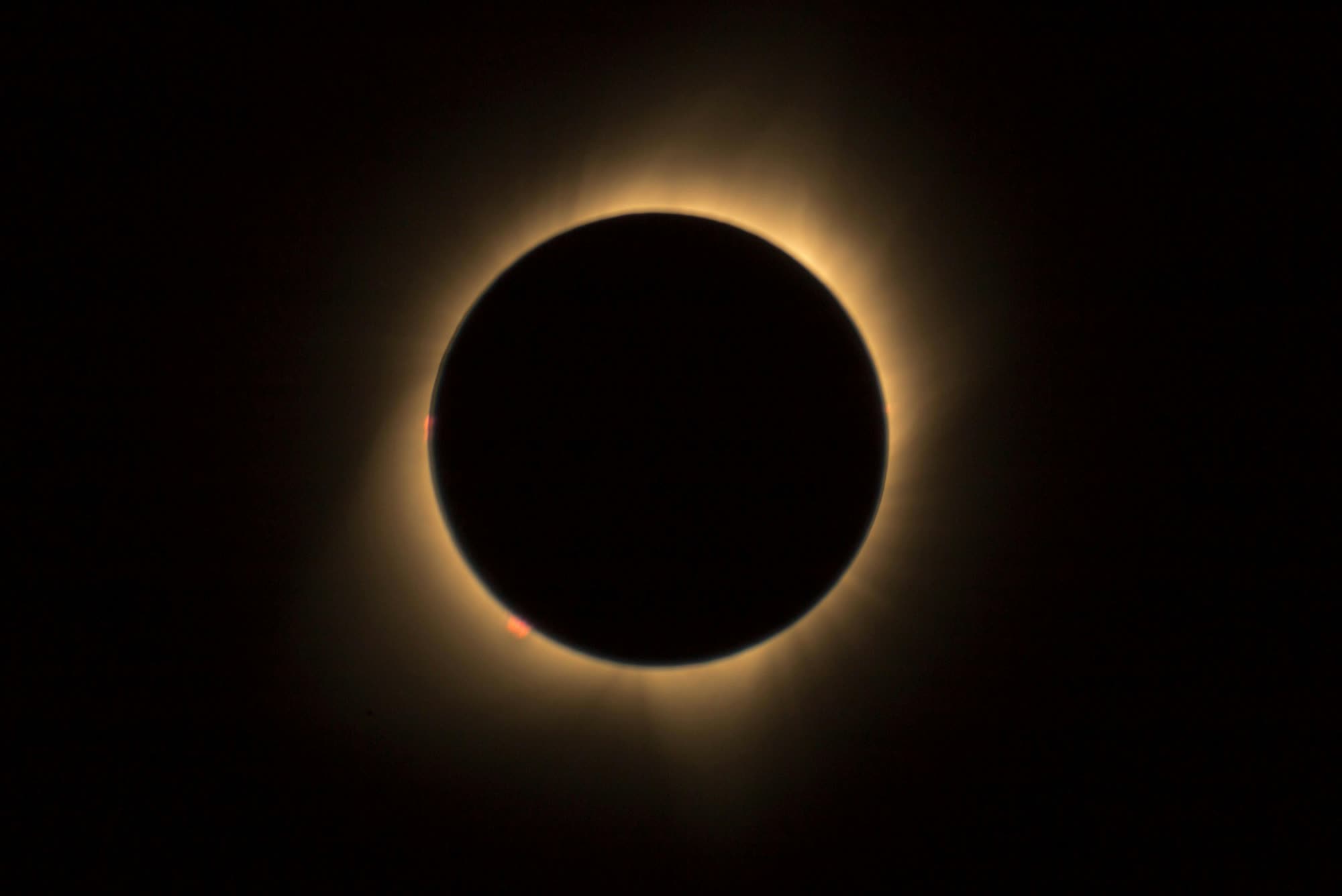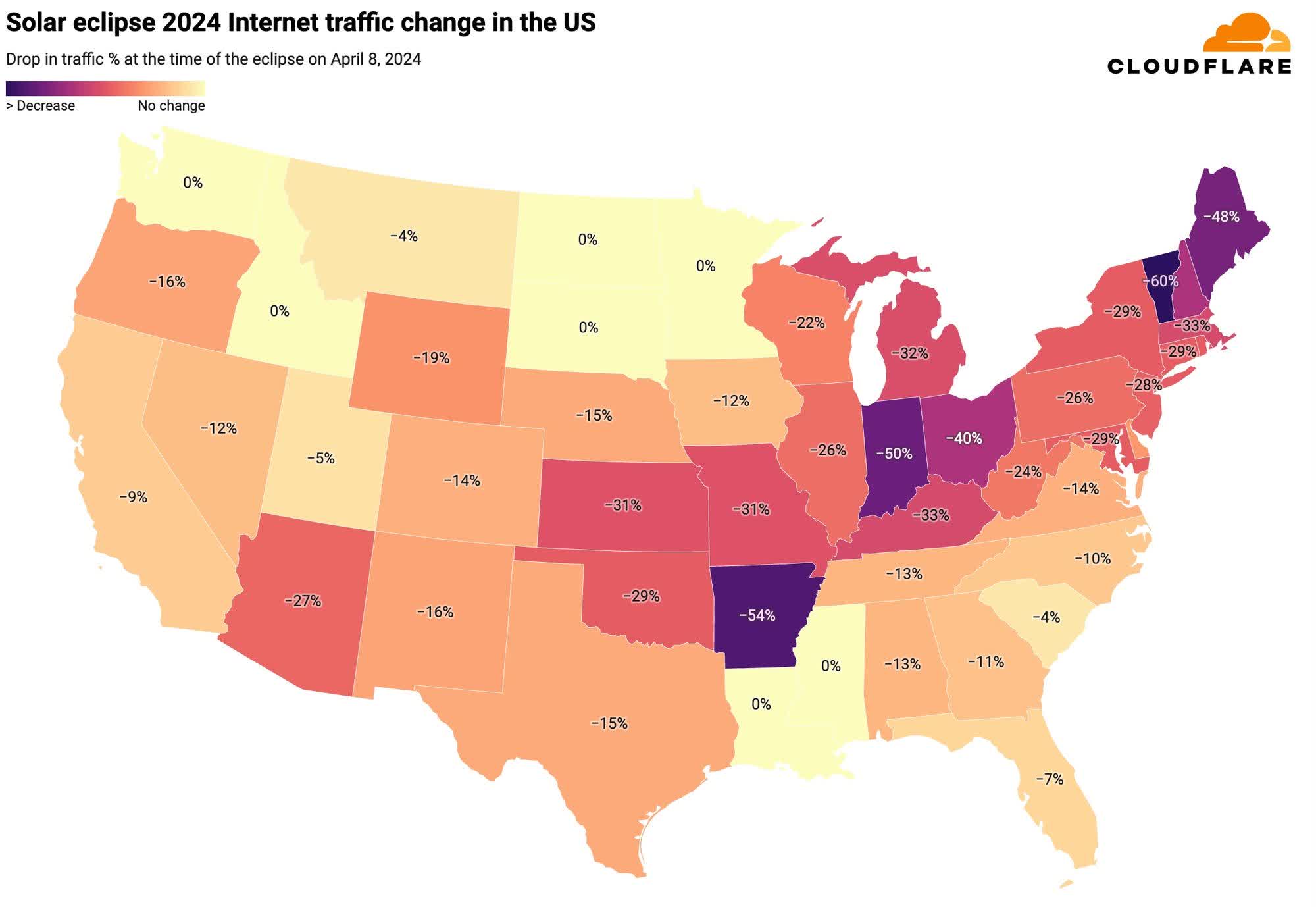In a nutshell: Eclipse mania has come and gone, but its impact on the populace is still being analyzed. The celestial event captivated millions as it traversed parts of Mexico, the US, and Canada, and managed to put a significant dent in Internet traffic in the process.
Across Arkansas, Indiana, Ohio, Maine, New Hampshire, and Vermont, which were in the path of totality, Internet traffic dipped between 40 percent to 60 percent during the eclipse, according to Cloudflare.
Online activity also slowed in states that witnessed a partial eclipse, but the impact was far less pronounced. In New York, which was not in the path of totality, web traffic dipped 29 percent.
Similar trends were also observed in Mexico, which was first in line for the celestial event. At 12:15 local time, online traffic in Durango dropped 57 percent as locals headed outdoors and turned their gaze towards the sky. Further north in the Canadian province of Prince Edward Island, Internet traffic dropped 48 percent during the eclipse.
It was business as usual in other states like North Dakota, Idaho, and Washington, that were too far away to witness the event, with no measurable dip in web traffic.
Related reading: This is the oldest footage of a solar eclipse in existence
As Cloudflare correctly highlights, it is not unusual for human and nature-related events to have a direct impact on Internet traffic.
During holidays like Thanksgiving, for example, when families gather together to share a meal, traffic typically dips. Conversely, on Black Friday and Cyber Monday, we see the opposite effect as consumers flock to their favorite e-commerce sites in search of deals. Last month, a massive Internet outage occurred in West and Central Africa after an undersea cable failed.
If you missed this week's solar eclipse, it'll be a while before the next opportunity presents itself. According to NASA, the next total solar eclipse that will be visible from the contiguous US will occur on August 23, 2044.
Image credit: Drew Rae


